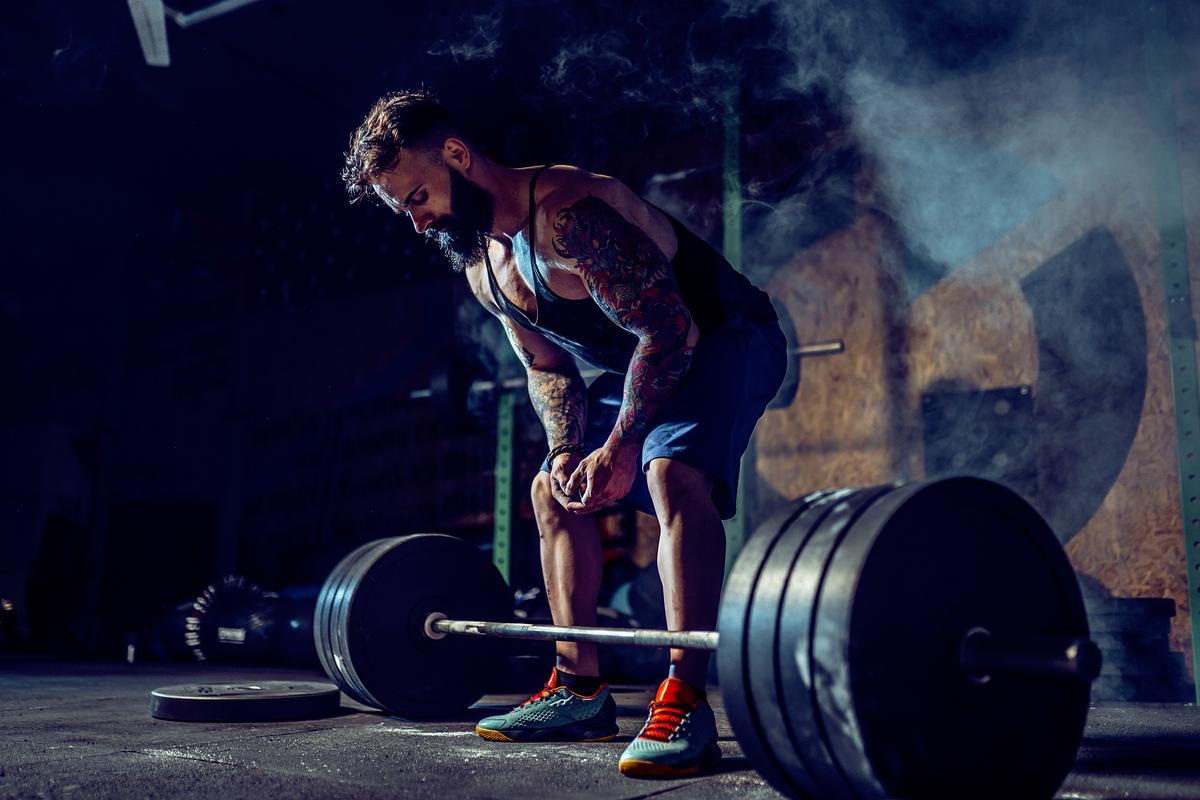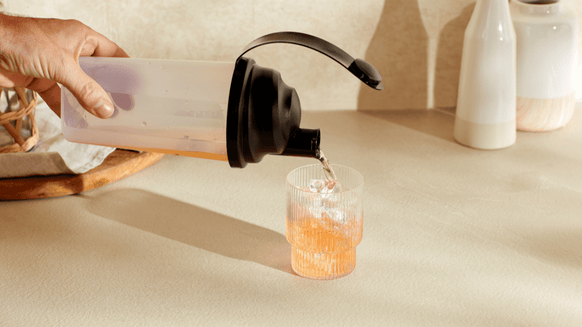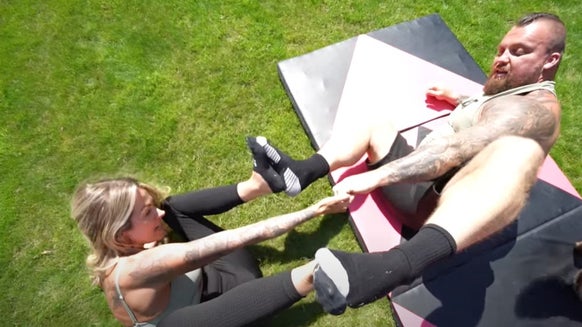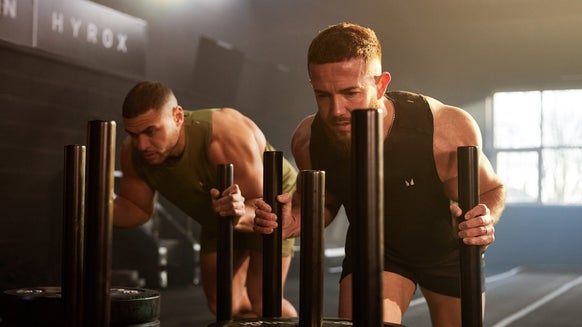
Deadlifts are one of the big go-to lifts when it comes to hitting the gym. The benefits of deadlifting are huge and the movement activates more muscles than most exercises.
If done correctly, the move can improve all your posterior chain muscles, grip strength and your core strength. If you have every intention of getting stronger and lifting heavy, this is the move that can set the foundations. It can highlight weak points so it is important to strat light, learn and master the technique and after this, you can progressively overload to improve your strength.
As one of the big compound lifts, it prompts the release of growth hormones and testosterone, which helps increase bone density and muscular hypertrophy.
In fact, the deadlift is one of few movements that work all major muscle groups in the body and, depending on the variation and stance, can work your lower back, hamstrings, glutes, calves, quads and
So why stop?! Everyone hits a wall, a sticking point, a plateau where you just can’t lift anymore. Adding 1kg feels like you have put on an extra plate per side! You need to drop the bar and find a different approach. Stop deadlifting and get onto different variations of the deadlift. By introducing new variations, can improve your strength, mobility and technique which in turn, pushes your PB’s to new levels.
How to do a deadlift
Step up to and under a barbell with your feet angled slightly outward, at hip-width apart. Bend over and grip the barbell with both hands at shoulder width. Bend your knees until the bar almost touches your shins.Hold a neutral spine, engage the core and glutes. Pick the bar up off the ground. Concentrate on pushing the floor away with your legs rather than thinking of it as pulling the bar. Continue pressing down with your legs until the barbell passes your knees and you are upright. Control the release of the movement towards the ground.
Deadlift variations
Like many exercises, there is more than one type and variation of the deadlift and, ultimately, it’s up to you to make the decision of which deadlift is your favourite and most suited to your goals, strengths and weaknesses.
1. Sumo Deadlift
Like the sumo squat, the sumo deadlift involves placing your feet at a wider stance, with your hands inside of your feet.
The sumo deadlift can be performed with an emphasis on the quads or hips and provides a range of motion that allows you to lift heavier loads – but remember, practice makes perfect
Stand with your feet wider than shoulder-width apart, and your toes pointing out at a 45° angle, rather than straight ahead. Bend at the hips to lower and grab the bar. Ensure a neutral spine and engage the core pinning the shoulders back. Drive through your heels and extend your knees and hips to lift the bar. Place emphasis again on pushing the floor away rather than pulling the bar. - Keep your core engaged and slowly released the bar back to the floor making sure your back odes not round.
2. Hex or Trap Bar Deadlifts
This type of deadlift is performed using a specialised bar discussed above.
By using the hex bar, you can change the mechanics behind the deadlift and lift evenly distributing your weight.
Step into the middle of the trap bar and stand with your feet hip-width apart. Reach down and grasp the handles of the bar, then sit your hips back. Open the chest out and pin your shoulders back ensuring a straight back. Keep your core engaged with a neutral spine and push the floor away with your legs. Squeeze your glutes at the top of the move. - Lower back to the start with a controlled smooth movement.
3. Snatch Grip Deadlift
In the snatch grip deadlift, your hands take on a wider grip.
The snatch deadlift is a type of Olympic lifting that mainly works the hamstrings. The snatch deadlift acts to strengthen the pull of the snatch. Ensure you have mastered the standard Deadlifts before moving into the Snatch Grip.
Take the same stance you would for your standard Deadlift. As you set your stance, make sure the barbell is positioned over your midfoot. Without moving the barbell, bend your knees until your shins make contact against the bar. Once they touch, keep your knees in place and do not drop your hips any lower. Pin your shoulders back and engage your core keeping a straight back. Push the floor away to stand up with the bar. Keep your arms straight throughout. - Once complete and you are stood tall at the top of the move, slowly and controlled, release back to the floor.
4. Romanian Deadlift
The Romanian deadlift– sometimes called the straight-legged deadlift focuses on using the hamstrings – in contrast to other deadlifts which focus on your lower back.
When performing this deadlift, the back should remain straight with all bending coming from the torso – this means instead of bending the knees the legs should be stiff throughout the lowering and lifting phases of the movement.
Pick the barbell up as you would in a conventional Deadlift. Stand with your feet wider than shoulder-width apart Pin your shoulders back and keep your spine straight with your core engaged. Push your hips back as you slowly lower the bar toward your feet. - Press your hips forward to come into a standing position with the barbell in front of your thighs.
5. Deficit Deadlift
The Deficit Deadlift is a great move to increase your range of motion and time under tension and should be performed once you are comfortable with the standard Deadlift and your flexibility in order to keep the correct form.
The technique is essentially the same however, adding a platform under your feet will create a deficit and you should look to start at a maximum of 1 inch.
6. Rack Pulls
The Rack Pull isolates the top half of the deadlift and although it does not replicate the full movement, it does allow for more weight to be pulled which will increase stronger back muscles. Emphasis is still on the lower back, however.
You can set your height at 1 of 3 heights. Just below, just above the knee or mid-thigh. The lower the height, the more you’ll involve your glutes and hamstrings in the exercise, while a higher starting point places greater focus on your back. When the bar is in your favoured position, grip with the same as you would in a standard Deadlift. Tense your core and pin back your shoulders. Engage your hamstrings by pushing your hips back. Keeping your back straight and looking forward, lift the weight by driving your hips forwards and straightening your knees. Pull your shoulders back at the top of the movement, then slowly reverse the movement and lower the bar back into the power rack.
Which Deadlift Technique is Best for You?
So, you’ve just read the deadlift variations – but which is best for you?
The best deadlift ultimately depends on which movements you can perform with the best form and a neutral spine. A neutral spine is by far the most important factor when deadlifting, which allows for adequate mobility and safety.
If you are new to the exercises I would suggest trying the Rack Pull or Romanian Deadlift. This will allow you to find the right form and technique safely before making the steps into the more compounding versions.
When it is time to take that next step, the Trap Bar Deadlift maybe your best option allowing for a more neutral hand position which will encourage the right form.
If the trap bar is unavailable, the sumo and conventional deadlift are the next step up, however, groin strength and hamstring flexibility can become limiting factors in both of these movements, whereby hip mobility and hamstring strength are two vital requirements for performing these deadlifts with correct form. Ultimately, the progression from trap to conventional deadlift is dependent on mobility and strength.
Common Deadlift Mistakes and How to Fix Them
Performing the deadlift can be simple once you’ve mastered the correct stance and form however, this is not an exercise to be taken lightly, whereby it is just as easy to incur injuries.
Because of the nature of the biomechanics and range of motion, deadlifts should be done with caution- which is especially the case for individuals who may suffer poor hip flexibility and back problems.
To avoid injury and mistakes, you need to make sure you have mastered the Deadlift form. To do this, practice both without a bar and with a standard bar on its own. Once mastered make sure you progress steadily with weight - lifting too heavy too soon is a recipe for disaster.
Even though hitting the gym and working out is often an opportunity for some alone- time,- it may be worth asking someone to spot your technique to ensure you are holding the correct form. If this is not possible, you can always record your set and analyse it back. You may think you look silly, but trust me, you’ll look worse-performing the movement with incorrect form and risking injury.
The eccentric part of the deadlift (lowering the bar) should not be neglected, as this part of the movement is actually riskier than the concentric part (picking it up) of the lift, and it is the part of the deadlift that will give you the greatest amount of delayed onset muscle soreness. Try not to drop the bar- put the bar down and practice lowering the bar with correct motion, movement and form.
Take Home Message
When considering which type of deadlift to perform, you should remember – similar to diet – a variety is best. By varying your deadlift movements, you’ll benefit both strength and hypertrophy, and will also prevent overuse-related injuries.
Overall, the type of deadlift depends on which muscles you aim to target and what your goals are. Experiment and find which exercises give you optimal positioning and technique for your body.








